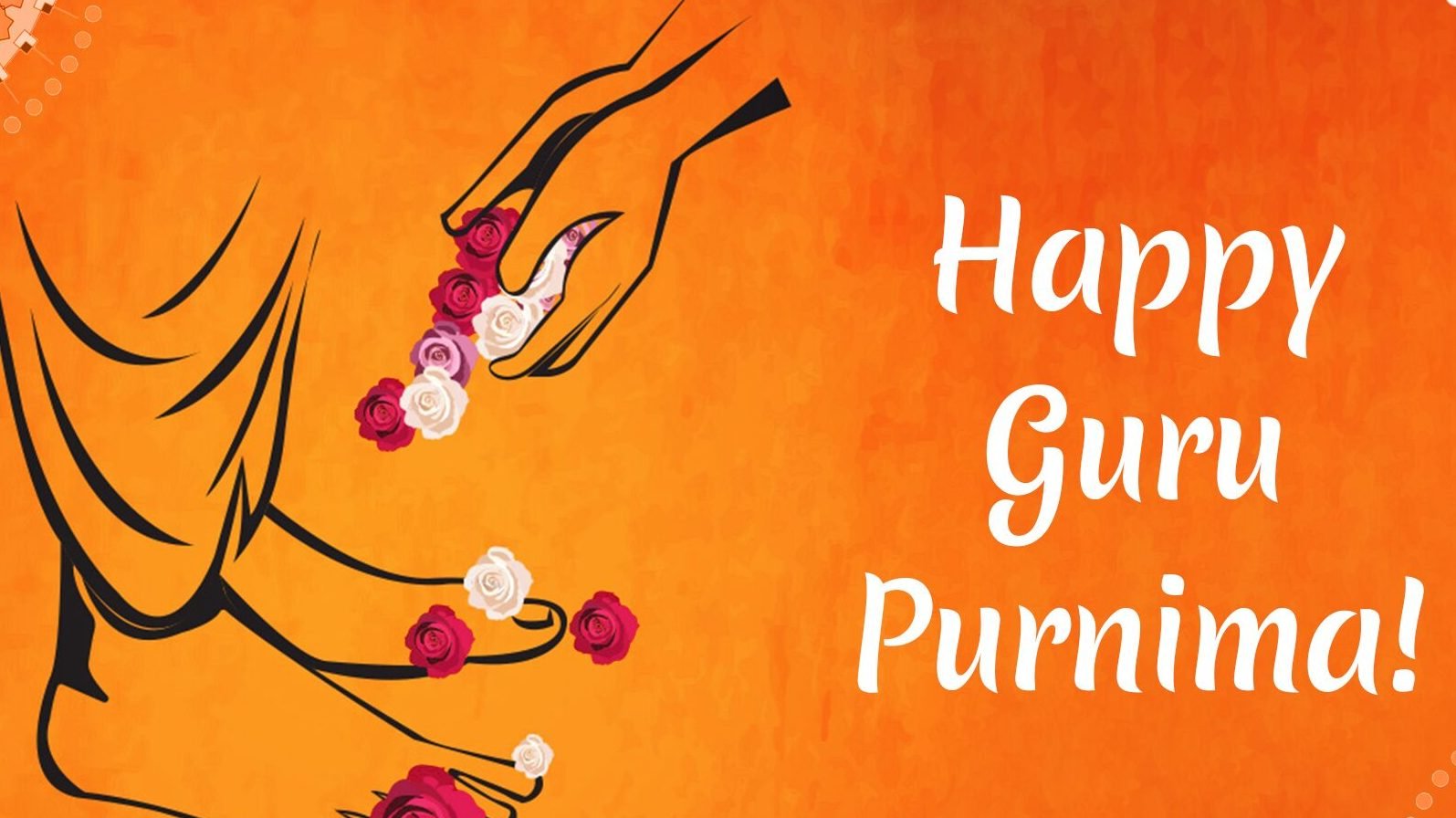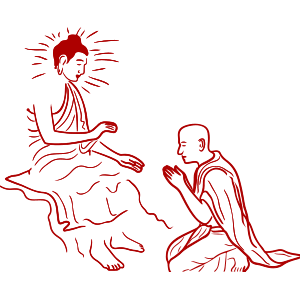
Guru Purnima July 2022: Guru Purnima is dedicated to Vyasa. Poornima Tithi begins at 4:01:55 on July 13 and ends at 00:08:29 on July 14
Guru Purnima is a popular Hindu festival celebrated to honor the relationship between teachers and disciples. On this day people worship their gurus. They express their gratitude to their gurus for guiding them through their childhood and formative years and leading them into the light of knowledge.
Guru Purnima is also known as Vyasa Purnima and is celebrated as the birth anniversary of Veda Vyasa, a great sage and author of the Hindu epic Mahabharata. Being associated with knowledge and teachings, this festival is also celebrated as Gyan Purnima.
Apart from Hindus, Buddhists, Jains and Sikhs also celebrate Guru Purnima. Sikhs celebrate this day to honor their ten spiritual gurus. While Jains mark it as “Trinok Guru Purnima”, a day when Lord Mahavira made his first disciple. In Buddhist culture, it is believed that Lord Buddha gave his first sermon at Sarnath on the day of Guru Purnima. They celebrate this day as Buddha Purnima.
When is Guru Purnima celebrated?
According to the Hindu calendar, Guru Purnima is celebrated across India on Ashadha Purnima (the full moon day in the month of Ashadha).
Significance of Guru Purnima festival
The word Guru is made up of two words – ‘Gur’ meaning darkness and ‘Ru’ which is the opposite of darkness. So, the word Guru refers to someone who lifts us from the darkness of ignorance and enlightens us with wisdom and awareness. The importance of this festival lies in the meaning of the word itself.
In Indian culture, a guru is a person or guru who removes all fear and ignorance from a person. In the words of Ramakrishna Paramahansa, “He alone is the true teacher who is illuminated by the light of true knowledge”. It is believed that our Guru resides in our vishuddha chakra in the throat and awakens when we transcend ourselves to our higher self.
The purpose of celebrating the festival of Guru Purnima is to follow the teachings of our Gurus and pay tribute to them. This day is dedicated to those gurus and teachers who made our lives valuable and worth living.
Story of Guru Purnima
Also, according to Hindu texts, Lord Shiva gave the knowledge of yoga to the Saptarishis on this day. Lord Shiva is considered as the first Guru or Adi Guru of the world.
In Buddhism, Guru Purnima is also considered as the birth anniversary, death anniversary and day of enlightenment of Lord Buddha. It is believed that the day for giving the first sermon and for birth, death and attainment of realization or knowledge is the same day. Thus, Guru Purnima is also known as Buddha Purnima.
Guru Purnima Festival – Rituals and Celebrations
Guru Purnima is celebrated in India and other countries like Nepal, Thailand, Sri Lanka and Malaysia. To observe Guru Purnima, various rituals are practiced among Hindus and Buddhists. Here is a glimpse of it.
On Guru Purnima, devotees take a bath and wear new clothes before offering prayers and tributes to their gurus. They also give “diksha” to their gurus and teachers. View Your Astrology Sign Chart Online
They recite Guru Shloka while remembering their Gurus
“|| Gurur Brahma, Gurur Vishnu, Guru Devo Maheshwar
Guru Sakshat Parabrahma, Tasmai Sri Gurve Namah ||
On this day, devotees worship Maharishi Vyasa and also make offerings to Sri Madhvacharya, Adi Shankaracharya and Sri Ramanuja Acharya, who are revered as Maha Gurus in Hindu culture. People perform “Vyasa Puja” and recite mantras and hymns. The Guru Gita, a sacred text, is also read in the memory of the Maha Guru.
If someone’s guru is not alive, then his picture or picture is worshiped according to the rituals. Mantras are also recited according to the rules in the memory of the Guru.
Guru Purnima Puja and Yagya are performed in temples and homes to seek the blessings of the Gurus. Some people also observe fast on the day of Guru Purnima and do yoga and meditation.
On this day, Buddhists pay respect to Lord Buddha and pay homage to him by visiting his temples. They perform a ritual called “Uposatha” and listen to the eight teachings of the Buddha. Many monks observe this auspicious day to begin their journey of meditation and penance.
Flowers, incense, candles, offerings, milk, clay or diyas and holy water are offered to the idols of Lord Buddha by priests, monks and nuns. Devotees wear white clothes and prepare “kheer” to serve as prasad.
Story of Guru Purnima: From Adiyogi to the present day Guru Purnima has been celebrated and cherished in Indian tradition for thousands of years. Sadhguru is exploring some of the stories of Guru Purnima, from the moment when the first guru or Adi Guru began to disseminate the science of yoga to the Saptarishis or seven sages, to Gautama being given the prescription by the Buddha to his monks, during which to seasonal trips.
Sadhguru: We have entered the period of Dakshinayana, when the Sun’s relationship with the planet changes from north to south. The changes within the human body are such that during this time, it is more conducive to spiritual practice, to set goals. This is the time when the farmer starts plowing the land. This is the time when the yogi begins to carry this piece of earth – the body – which he is fortunate to carry. And at the same time, thousands of years ago, Adiyogi’s grand eyes fell on the human being.
Story of First Guru Purnima
In yogic culture Shiva is not seen as a deity, he is seen as Adiyogi, the first yogi. 15000 years ago, a yogi appeared in the upper regions of the Himalayas. No one knew where he came from and what his antecedents were – and he didn’t introduce himself – so they didn’t know his name. That’s why he is called Adiyogi or the first yogi.
Guru Purnima is the full moon day when the first Yogi transformed himself into Adi Guru – the first Guru.
He just came and sat and did nothing. The only sign of life were tears of ecstasy dripping from his eyes. Besides, it didn’t even look like he was breathing. People saw that he was experiencing something they could not fathom. They came, waited and left because the person was oblivious to the presence of other people.
Only seven people hung up. These seven men were insisting that they should learn from him. Adiyogi ignored him. He pleaded, “We want to know what you know.” He dismissed them, “Idiot, like you are, you won’t know in a million years. You need to prepare. It requires tremendous preparation. It’s not entertainment.”
The first full moon of Dakshinayan is Guru Purnima, the day the first Guru was born.
But because they were so insistent, he gave them some preliminary steps. So they started preparing – day after day, week after week, month after month, year after year – they prepared. Adiyogi simply ignored him. It is said that he meditated for 84 years. Then, on a full moon day, after 84 years, the day the sun was shifting from the northern part to the southern part – known in this tradition as Dakshinayana – Adiyogi saw these seven people. He had become a shining object of knowledge. They were absolutely ripe to receive. He could no longer ignore them.
He observed him closely and when the next full moon occurred, he decided to become a guru. That full moon day is known as Guru Purnima. Guru Purnima is the full moon day when the first Yogi transformed himself into Adi Guru – the first Guru. He turned to the south – that is why he is known as Dakshinamurti – and began to transmit the science of yoga to the seven disciples. Thus, the first full moon of Dakshinayana is Guru Purnima, the day the first Guru was born.
Guru Purnima: Possibility of Transcending
The telecast – the world’s first yoga event – took place on the banks of Lake Kantisarovar, a few kilometers from Kedarnath. When we say “yoga,” we’re not talking about twisting your body or holding your breath. We are talking about the mechanism of life and how to lead the piece of this creation – you – to its ultimate possibility. This unprecedented dimension of human consciousness, or the possibility of the individual becoming a window to the universal, was illuminated on this day.
Guru Purnima marks one of the greatest moments in the life of humanity. It is about transcendence and liberation, a possibility that man never knew existed.
Guru Purnima marks one of the greatest moments in the life of humanity. It is about transcendence and liberation, a possibility that man never knew existed. It doesn’t matter what your genetics are, who your father was, or what limitations you were born with or acquired, you can overcome them all if you are willing to make the effort. For the first time in human history, he declared that it was possible for man to develop consciously.

